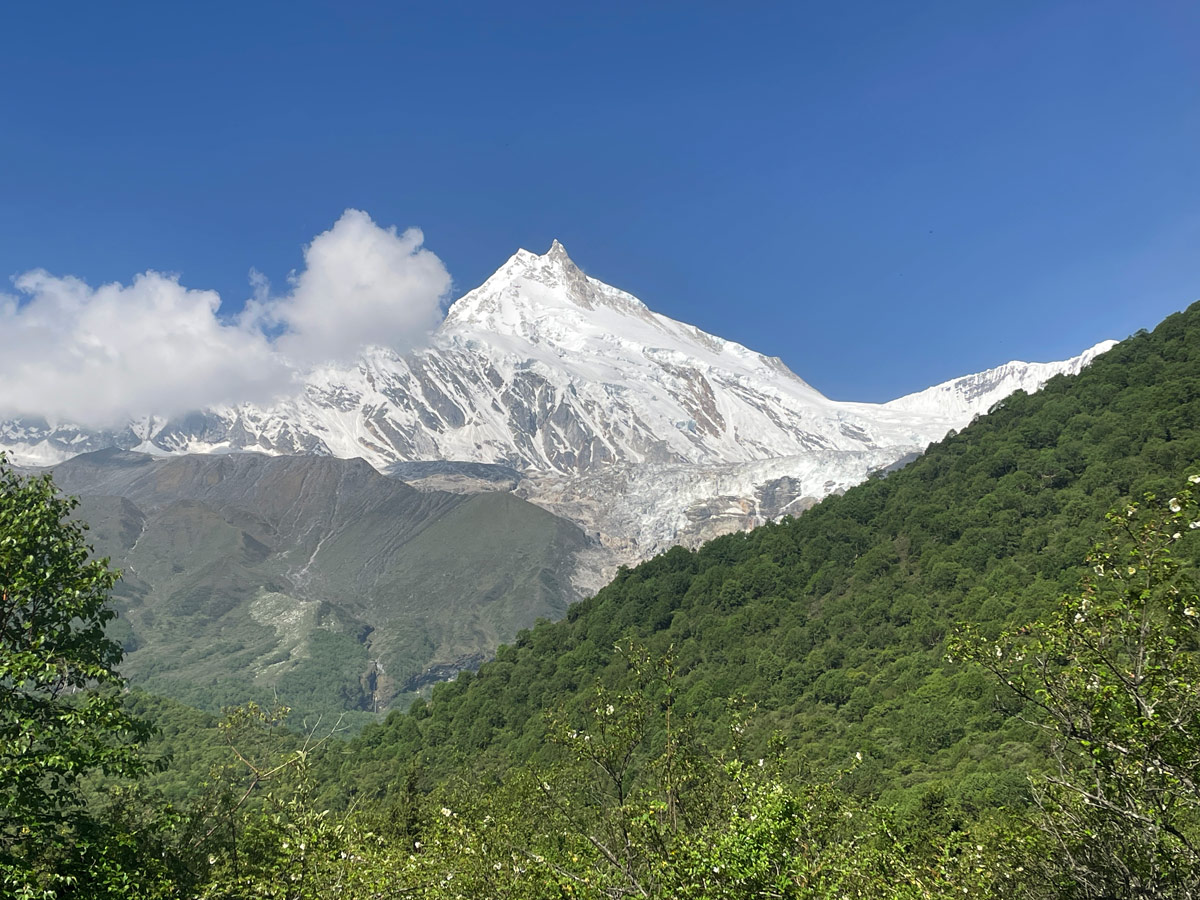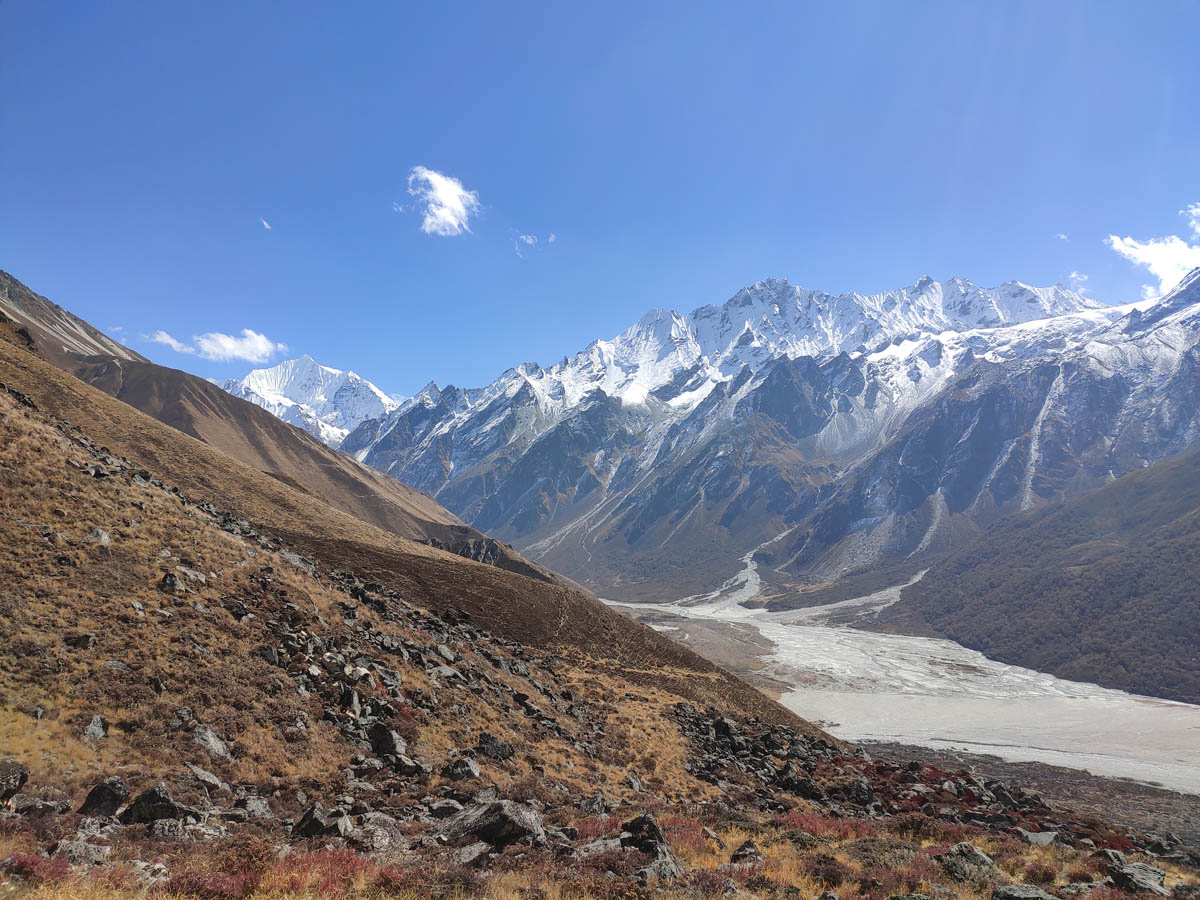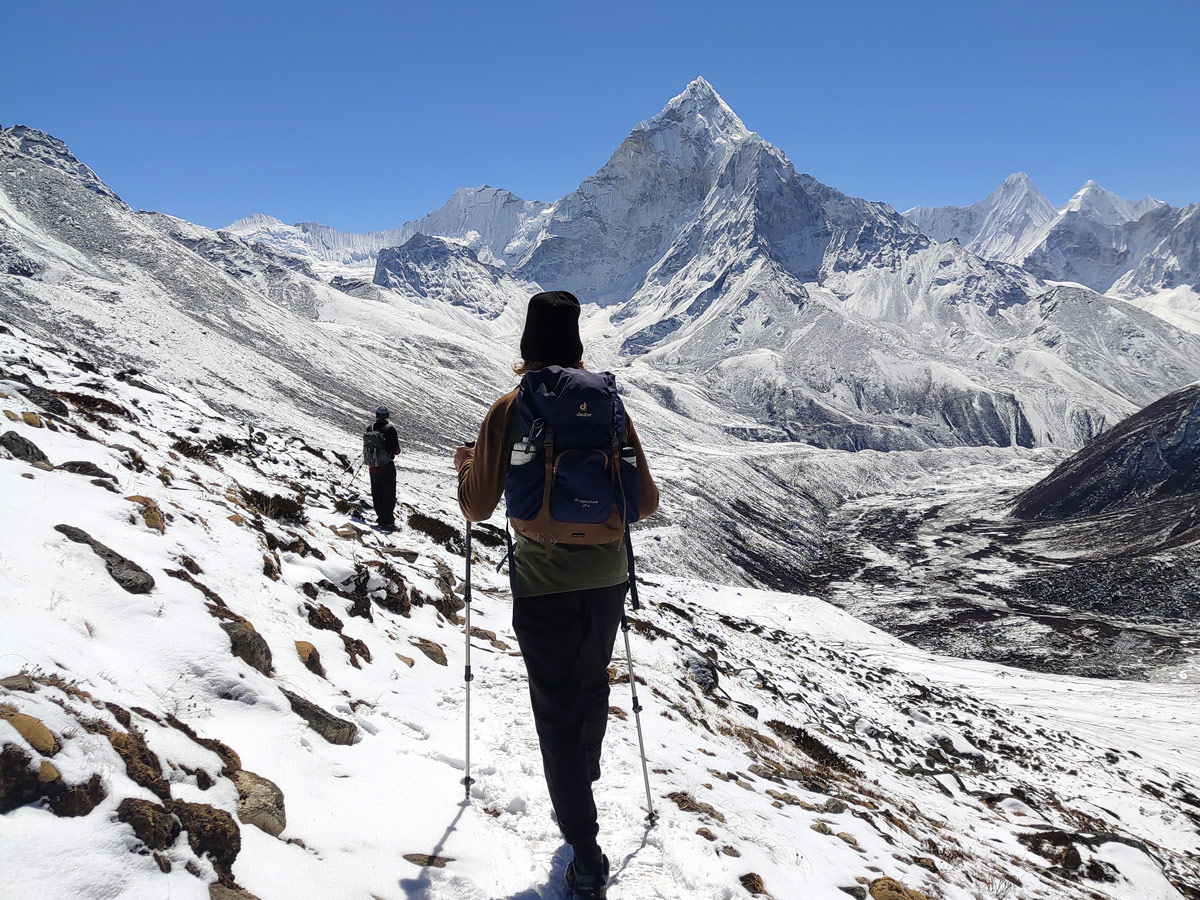A pristine wilderness nestled amidst the Himalayas of Nepal; the Manaslu Conservation Area is a sanctuary for wildlife as well as mesmerizing landscapes topped off by the soothing cultural experiences.
Out of the conservation areas of Nepal, this one is an adventure beckoning intrepid trekkers and culturally curious alike as there is a lot more to the region beyond its breathtaking trekking trails.
So, let’s uncover this hidden gem of Nepal as we delve deep into the untamed beauty of the region.
Geography and Biodiversity
Declared a conservation area in 1998, the Manaslu Conservation Area is one of the unique protected areas of Nepal covering 1663 sq km in the Gorkha district. It sits adjacent to the Annapurna Conservation Area and is bordered by the Tibetan region.
The area features a huge range of elevation starting from sub-tropical forests at 600 m and culminating at 8,163 m at the tip of the eighth highest mountain in the world- Mount Manaslu.
Within this dramatic altitude range starting from the verdant foothills of Gorkha district lies different climatic zones like tropical, subtropical, temperate, subalpine, alpine, and arctic while harboring several ecosystems.
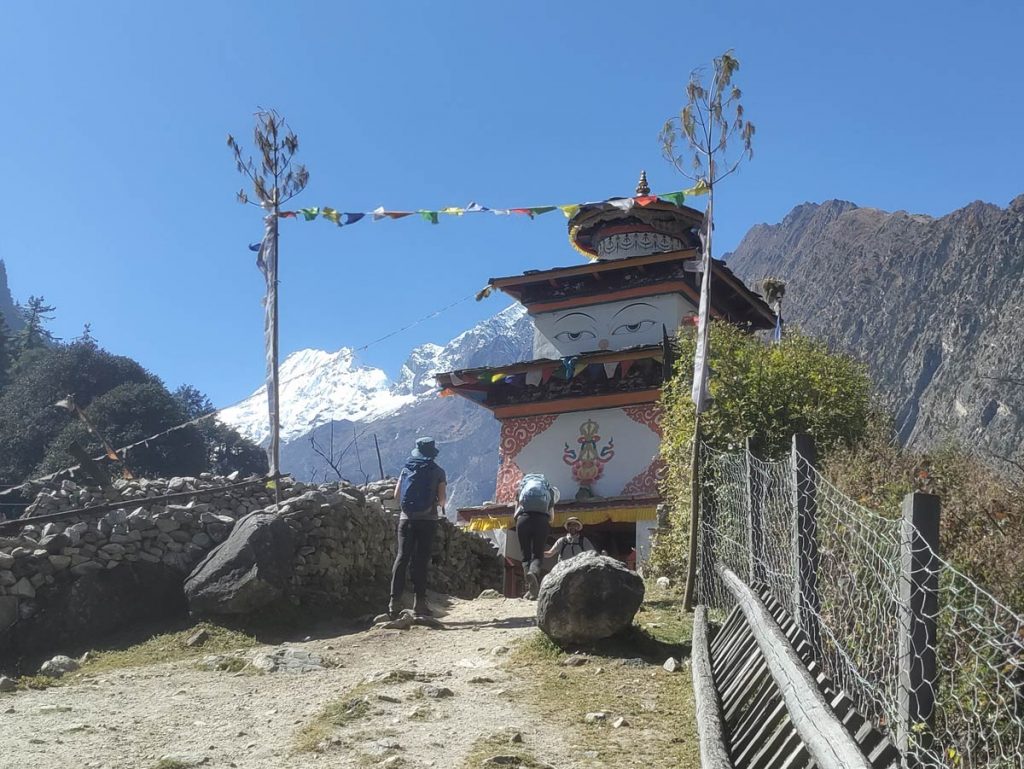
The Manaslu Conservation Area features lush sub-tropical jungles at the lower altitude which transform into valleys and forests as you near the tree line before finally transfiguring into alpine meadows and challenging passes beyond the tree line.
Several Himalayan giants stand tall in the Manaslu Conservation Area like Mt. Manaslu, Samdo, Larkya Peak, Simnang Himal, Langbo Kangi, Chamar, Langju, and others.
Accompanying these are the stunning glaciers like Larkya Glacier and Pungyen Glacier amidst others.
Many rivers flow in the region among which the most predominant ones are the mighty Budhi Gandaki River and the Marshyangdi River which carve their way inside the region flowing in all their might.
Flora and Fauna
The diverse geography of the Manaslu Conservation Area is home to a variety of flora and fauna, almost making it a hotspot for biodiversity as it inhabits 33 species of mammals, 110 species of birds, 11 species of butterflies, and 3 species of reptiles.
The likes of snow leopards, Himalayan Tahr, musk deer, and the adorable red panda amongst several others find their refuge in the dense forests and the snow-blanketed landscapes of the region.
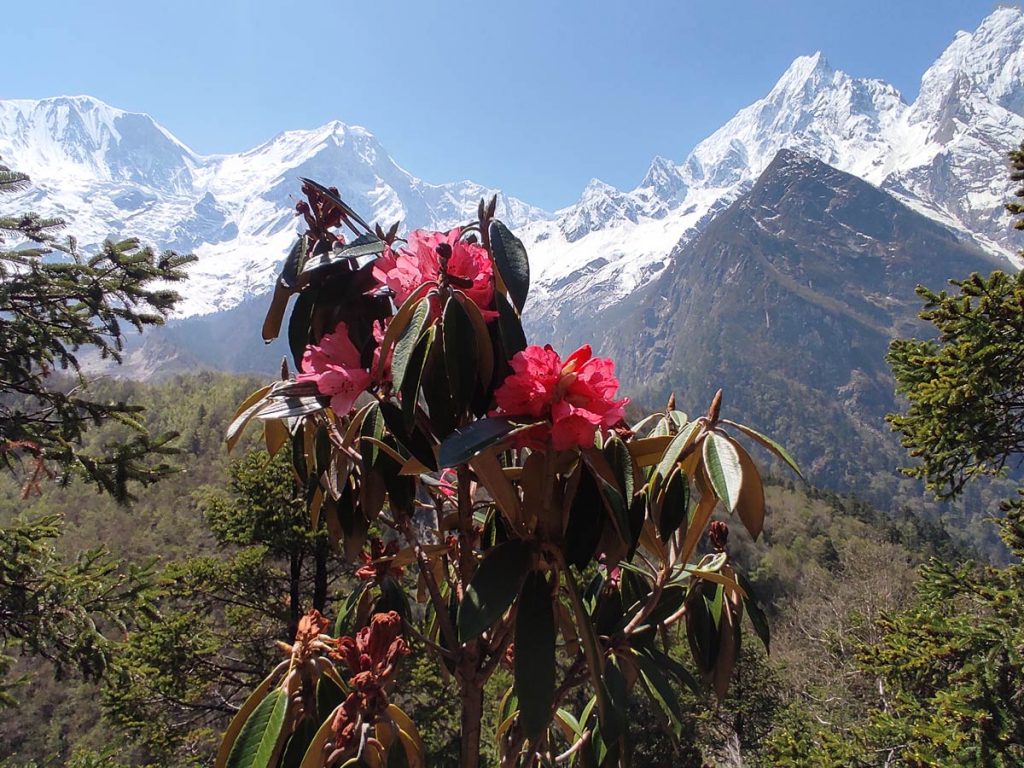
Not just this, the region also inhabits 2000 species of plants, 11 types of forests, 50 species of useful plants, including the rhododendron forests and other wildflowers dotting the landscapes all the way up to the Nival zone.
A haven for birdwatchers, the Manaslu Conservation Area has recorded over 110 species of birds like the bearded vultures, lammergeier, and several more covering the skies of the region.
Cultural Significance
Adventure meets culture in the Manaslu Conservation Area as the region boasts highly authentic culture with several cultural groups residing in the region radiating their own customs and warmth.
The area is home to cultural groups like Nubri, Tsum, Brahmins, Gurungs, Tibetans, and Lamas who are scattered all over the region. Bordering Tibet, the region is highly influenced by Tibetan culture.
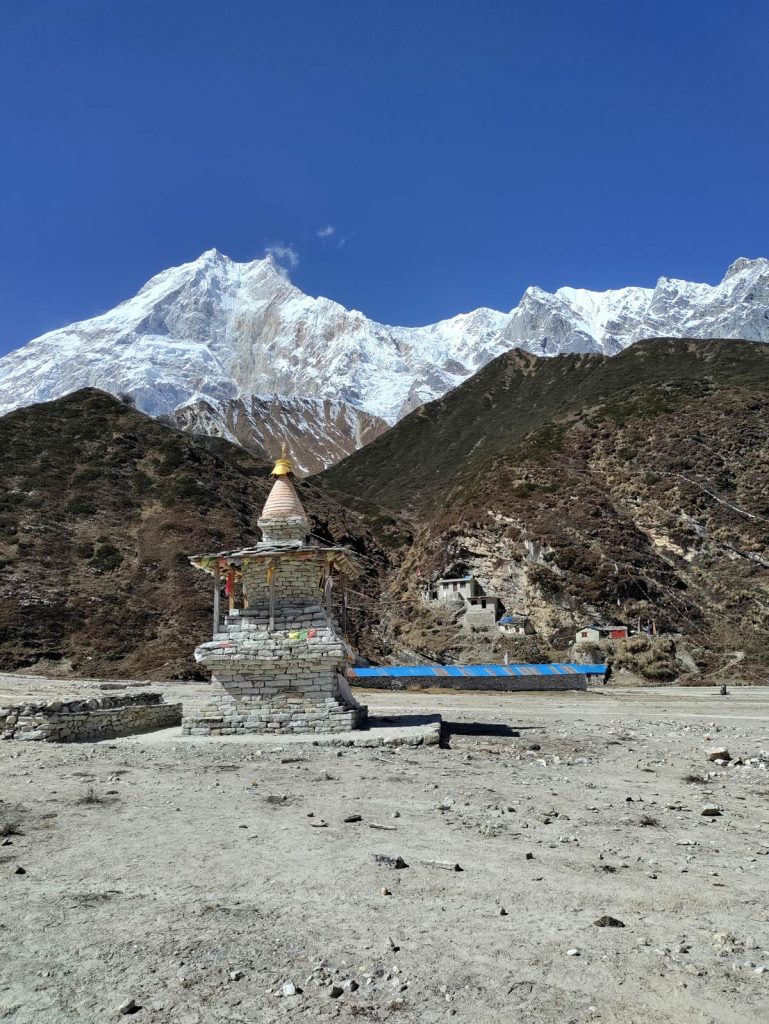
Buddhism is predominant here and the area is dotted with ancient chortens, mani walls, and numerous monasteries depicting the faith of people in the religion.
It is also home to historically significant sites like the Himalayan pilgrimage- Tsum Valley.
Rachen Gompa, Mu Gompa, Pungyen Gompa, Lho monastery, Sama Gompa, and Shringi Gompain Bihi are some of the famous monasteries of this region radiating nothing but spirituality amidst the crisp air of mountains.
Major Attractions in Manaslu Conservation Area
Larkya La Pass
One of the longest passes in the Himalayas, the Larkya La pass is undeniably the major attraction of the Manaslu region and is also the defining moment for the Manaslu Circuit trek.
This challenging yet thrilling pass is located at an elevation of 5,106 m and is also the link between Budi Gandaki Valley and the Marshyangdi Valley.
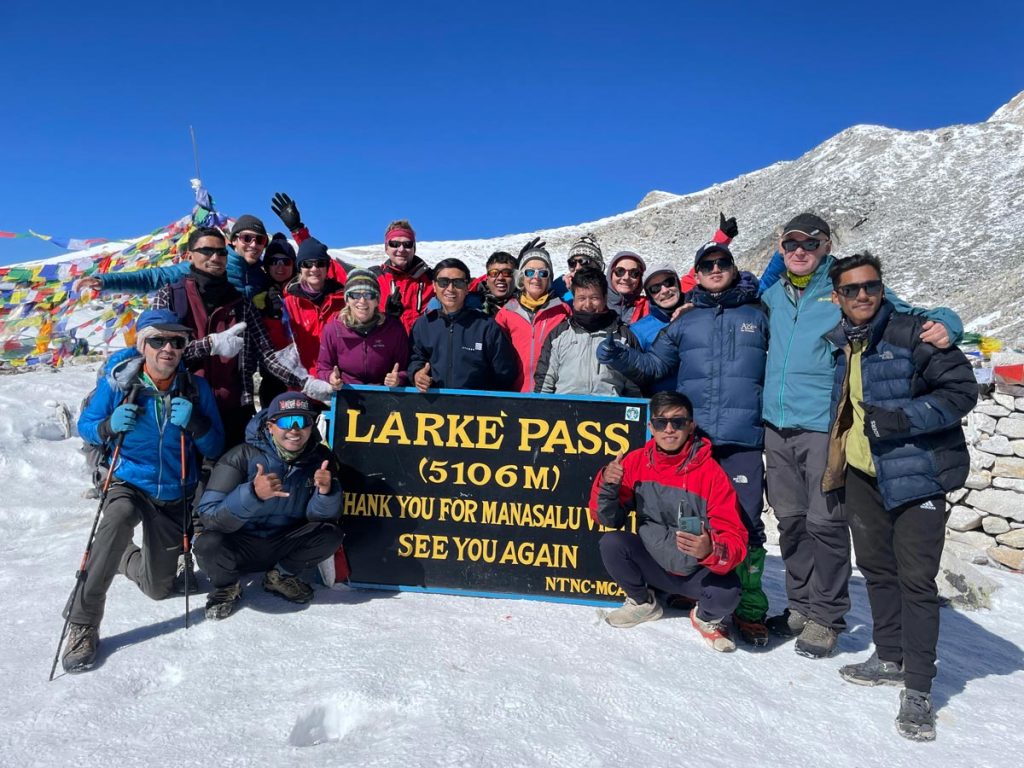
The journey to Larkya La Pass is an adventure along the rugged trails and is quite a demanding one. However, it all becomes worth it when stunning panoramas of peaks like Manaslu as well as the Larkya glacier.
It features a dramatic and stark landscape with less to no vegetation and is a sight to behold.
Budhi Gandaki Valley
Originating at Mt. Manaslu and meeting the Trishuli river at Benighat, the Budhi Gandaki River has carved out a 150 km long Budhi Gandaki Valley in the Manaslu Conservation Area which has a catchment area of 5,370 sq km.
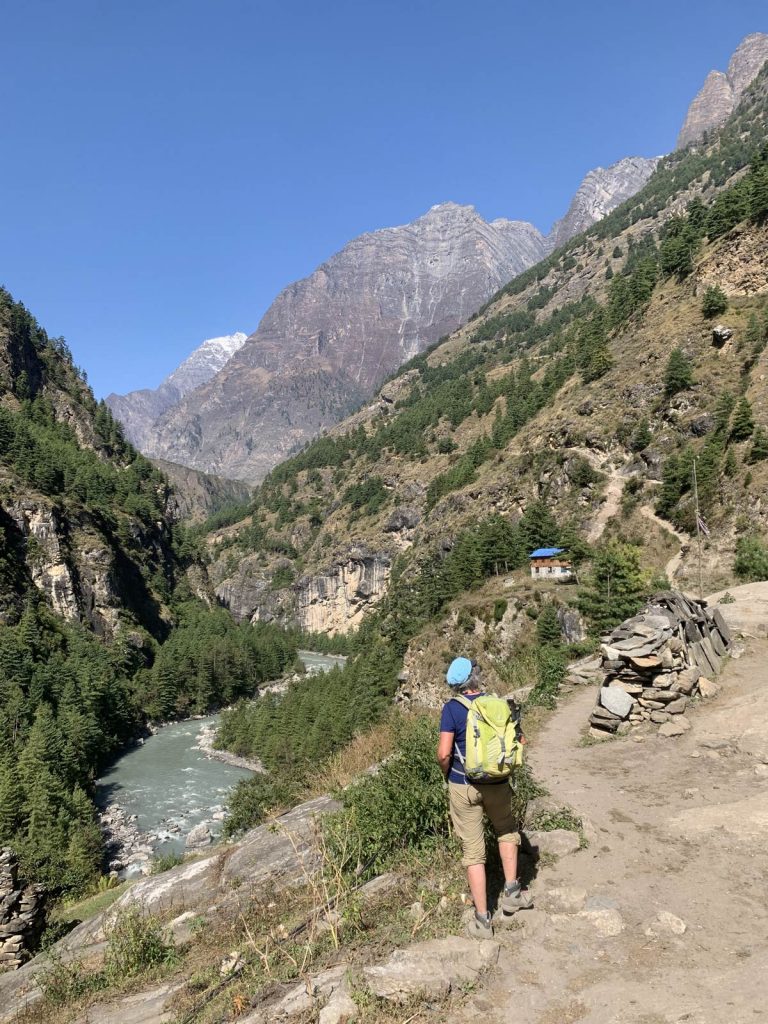
Formed by one of the tributaries of Gandaki- the Budhi Gandaki River, this valley is the center of this region as most of the treks in the Manaslu Conservation Area weave their way through the winding trails of Budhi Gandaki Valley.
The valley features steep slopes ranging from 300 to 750 and is one of the best places in Nepal for river rafting on the mighty Budhi Gandaki River.
Tsum Valley
Bordering Tibet, the Manaslu Conservation Area features a secluded valley located at elevation ranging from 2,000 m to 3,500 m- the Tsum Valley.
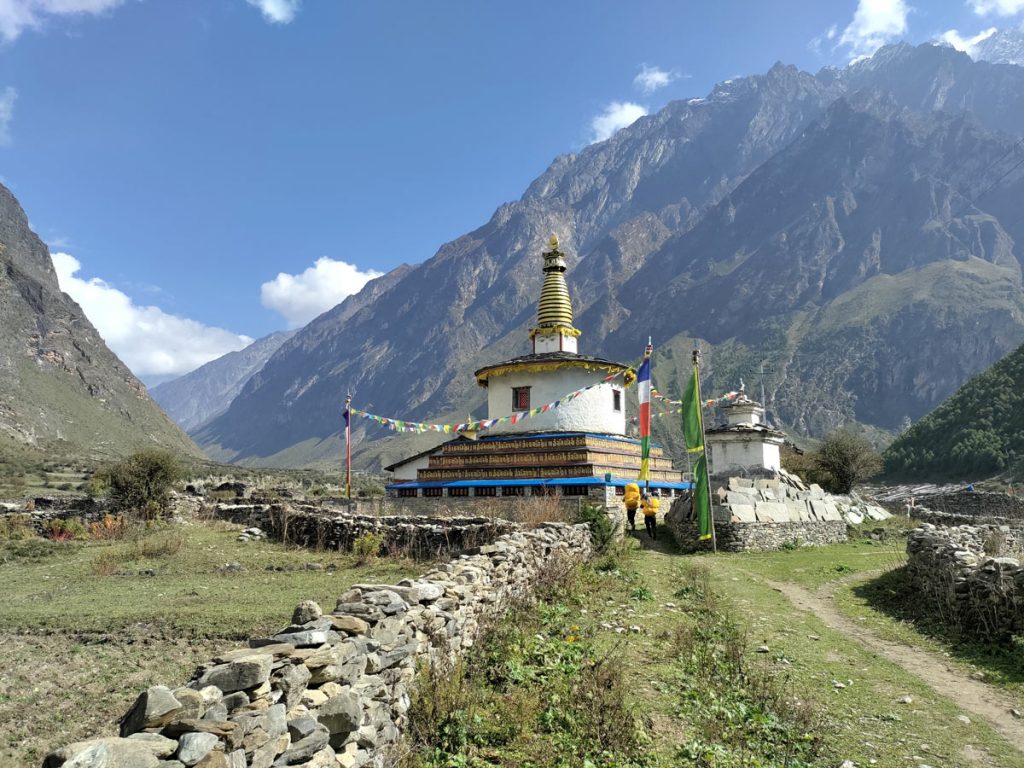
A sacred Himalayan pilgrimage site, this valley boasts an old Buddhist and civilization history and Tibetan style Buddhism is predominant in the region. The locals of the Tsum valley are known as the ‘Tsumbas’.
Featuring several caves, monasteries, mani walls, and chortens, the Tsum valley also puts an excellent panorama of the mountains on display. The valley is home to blue sheeps and Himalayan Thar.
Tatopani
Located on the way during the Manaslu Circuit Trek, Tatopani is an interesting stop in the Manaslu Conservation Area which features natural hot water springs.
It is located under a large cliff in the Manaslu region and is a popular resting spot for trekkers and visitors as they get the much-needed rest here.
Rupina La Pass
Located at an altitude of 4,720 meters, the Rupina La pass is another adventurous spot in the Manaslu Conservation Area which offers an adventure that is thrilling but less challenging than the Larkya La Pass.
This pass boasts equally stunning views of the Manaslu range and also features trekking routes dedicated for the exploration of Rupina La Pass only.
Birendra Lake
Locally known as Birendra Taal, Birendra Lake is a freshwater lake located in the Manaslu Conservation Area at an altitude of 3,691 meters in Samagaun.
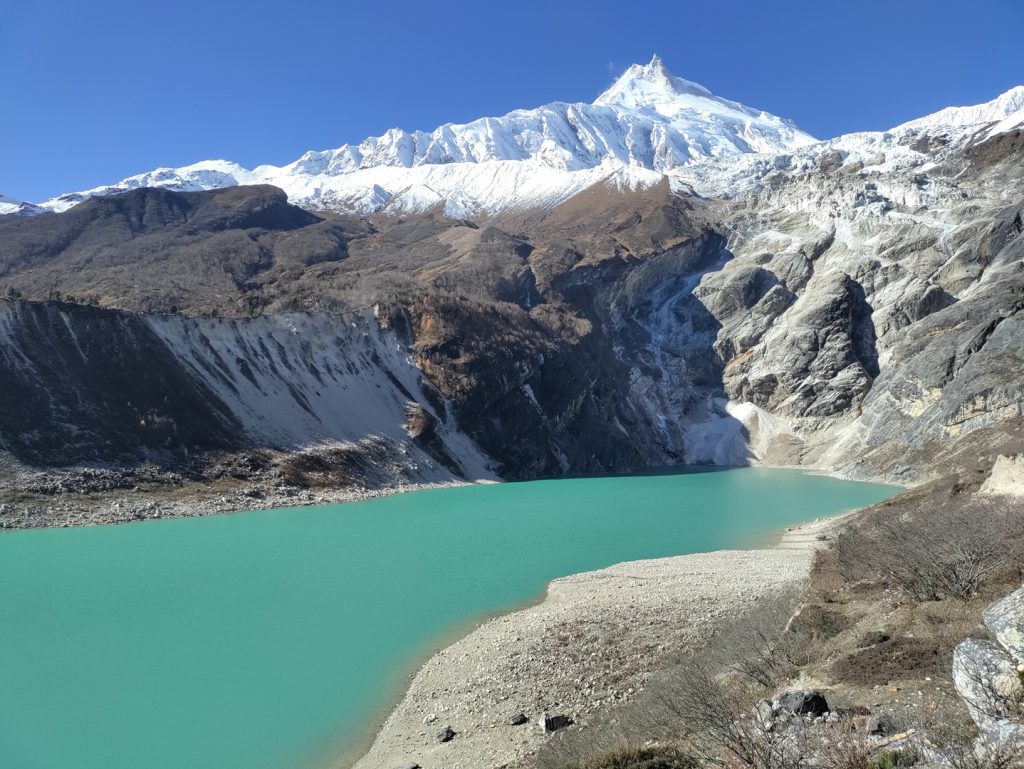
It is situated in the Manaslu Glacier and is near the Gompa in Samagaun and the Pungyen Glacier. This lake boasts slug-green water which is home to a variety of aquatic life like plants and plankton.
Birendra Lake is a popular stop amongst the visitors of the region as the environment radiates serenity while the icy water gives a taste of the cool temperatures of the surrounding mountains.
Trekking Routes
Although an off-the-beaten region when it comes to trekking, the Manaslu Conservation Area has been getting lots of popularity as of lately for the treks that weave their way through the remote and untouched corners of the region.
The region features several trekking routes and contrasting the popular trekking routes of the country, these treks manage to provide a more authentic experience and the true essence of life in the Himalayas.
The crown jewel of the region is definitely the Manaslu Circuit trek. It offers the trekkers with the true Manaslu experience taking them through the heart of the region traversing through stunning landscapes while circumnavigating the Manaslu massif.
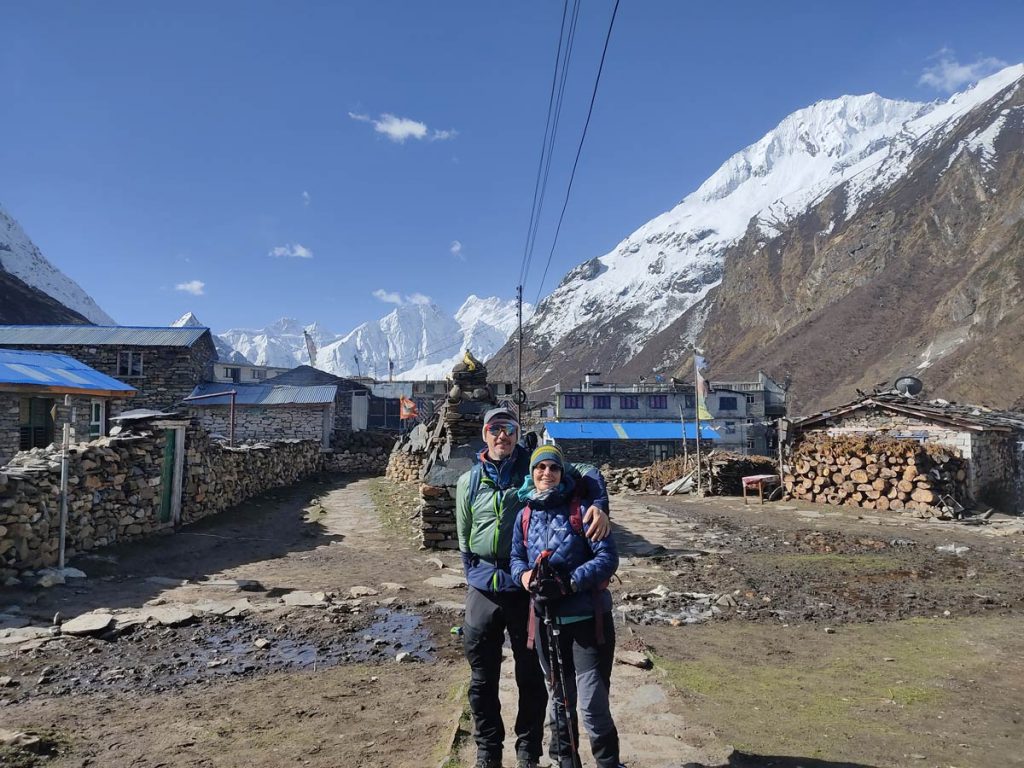
The Manaslu Circuit trek is an elaborate and all-encompassing adventure that features everything from the banks of Budhi Gandaki, subtropical jungles, monasteries like Pungyen Gompa, tranquil villages like Samdo and Samagaun, and a challenging pass.
It is one of the strenuous treks as it has limited access and takes the trekkers on a journey of two weeks full of tackling challenges as they make their way towards the Larkya La pass. However, the challenges are absolutely worth the memorable experience it provides.
For those seeking a rather introspective alternative, the Tsum valley trek ticks the box as it takes the trekkers on a mystical journey to the ‘hidden valley’ as they experience the richness of the valley in terms of ancient art, culture, and religion.
Also considered a Himalayan pilgrimage, the trek to Tsum Valley also provides the trekkers with an opportunity to experience the wave of peace and spiritual renewal as they explore the unique Tibetan Buddhist culture of the region.
For those wanting to get a closer experience of Mt. Manaslu, the region also features Manaslu Base Camp trek taking you straight to the foot of the eighth highest peak in the world as views of other surrounding peaks unfold.
The Rupina La pass trek also presents an opportunity to bask in the beauty of the region while not having to reach as far as conquering the Larkya La pass. It offers equally stunning views and landscapes.
Planning your visit
Permits and Regulations
The Manaslu Conservation Area is one of the protected areas of Nepal as it has a delicate ecosystem prone to several challenges like environmental threats, loss of habitat, and the pressures of increasing tourism.
That is precisely why the Manaslu Conservation Area Project came into existence as a part of the government’s efforts to preserve the habitat, protect the species, and ensure responsible tourism in Nepal.
This has deemed the Manaslu Conservation Area as a restricted area and visitors are required to carry certain permits to be able to explore the region.
The permit rule is strictly applicable and there are many checkpoints throughout the region where you must present the said permits.
One needs to have a Trekker’s Information Management System (TIMS) permit, Manaslu Conservation Area Permit (MCAP) as well as a special Restricted Area Permit (RAP).
Besides this, those embarking on the Manaslu Circuit Trek also need to have the Annapurna Conservation Area Permit (ACAP) for the trek as it also enters and explores some regions of the Annapurna Conservation Area.
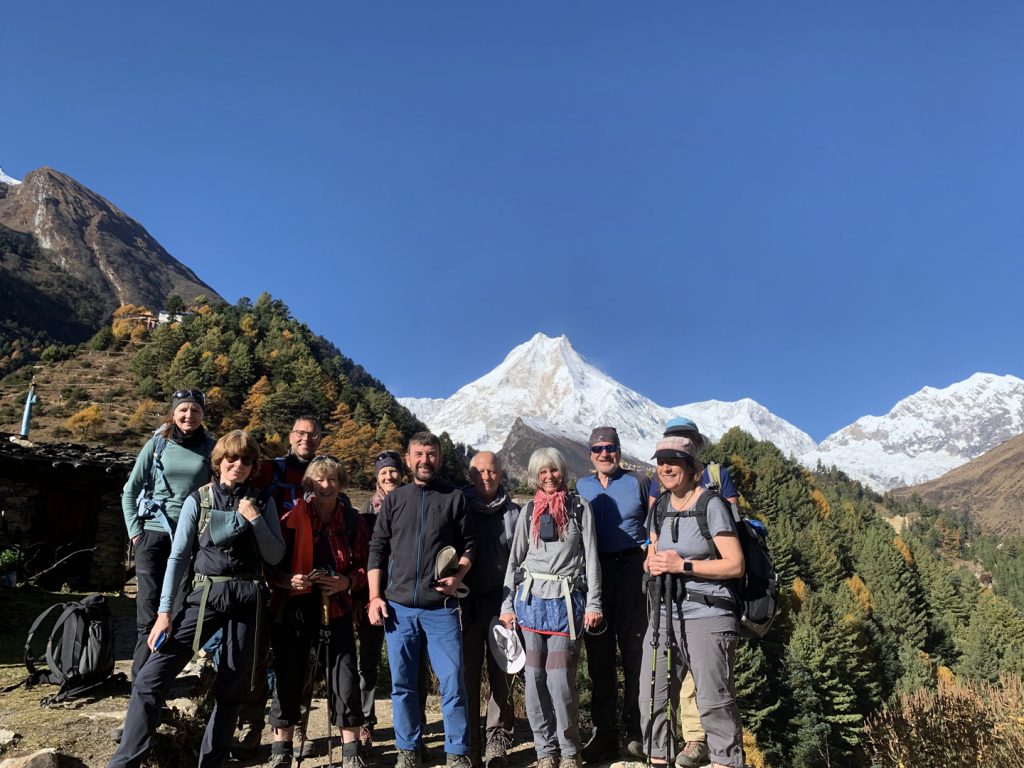
These permits can easily be obtained in Kathmandu after paying a certain amount based on one’s nationality and they must be kept secure as they need to be presented during the journey.
Packing Essentials
Unlike some other protected areas of Nepal, the Manaslu Conservation Area is a remote region with limited to no accessibility to certain facilities like transportation and high-end facilities in terms of lodging too.
Despite being warm and welcoming, the resources in the region are limited when it comes to fanciness. Therefore, there are high chances that you will be staying away from your regular luxuries during your exploration of the region.
Thus, thorough packing is an extremely important part of preparing for the Manaslu experience. And this is applicable for trekkers and non-trekkers alike.
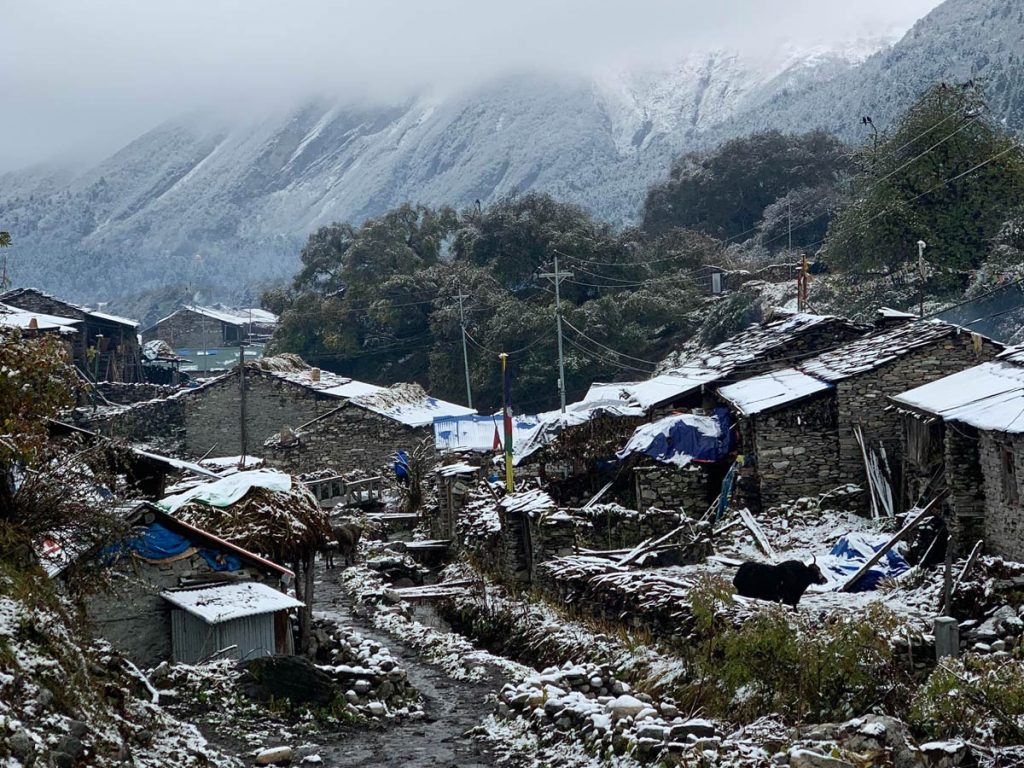
The must-haves on your list should definitely be good clothing essentials ranging from inner to outer layers so that you can tackle all the weather-related challenges. Besides this, a good bag, first aid kit, jacket, medicines, and your documents top the list.
Once you are done with these essentials, you can top it off with additional items like sun protection, sunglasses, a camera, some snacks, and a good pair of shoes and you should be good to go.
For trekkers however, thorough preparation is the key. Therefore, you will require much more packing than the items mentioned above although the basics remain the same. Continue reading to find your ultimate checklist about packing for Manaslu Circuit trek.
Best time to visit Manaslu Conservation Area
Although the Manaslu Conservation Area is open to visitors all year round, the best times to visit the region have to be the months of spring (March to May) and autumn (September to November) due to several reasons.
With the indulging energy and pleasant weather, these seasons attract a lot more visitors traffic in the region as people get to witness nature’s grandeur with the ever-changing landscapes during rather comfortable settings.
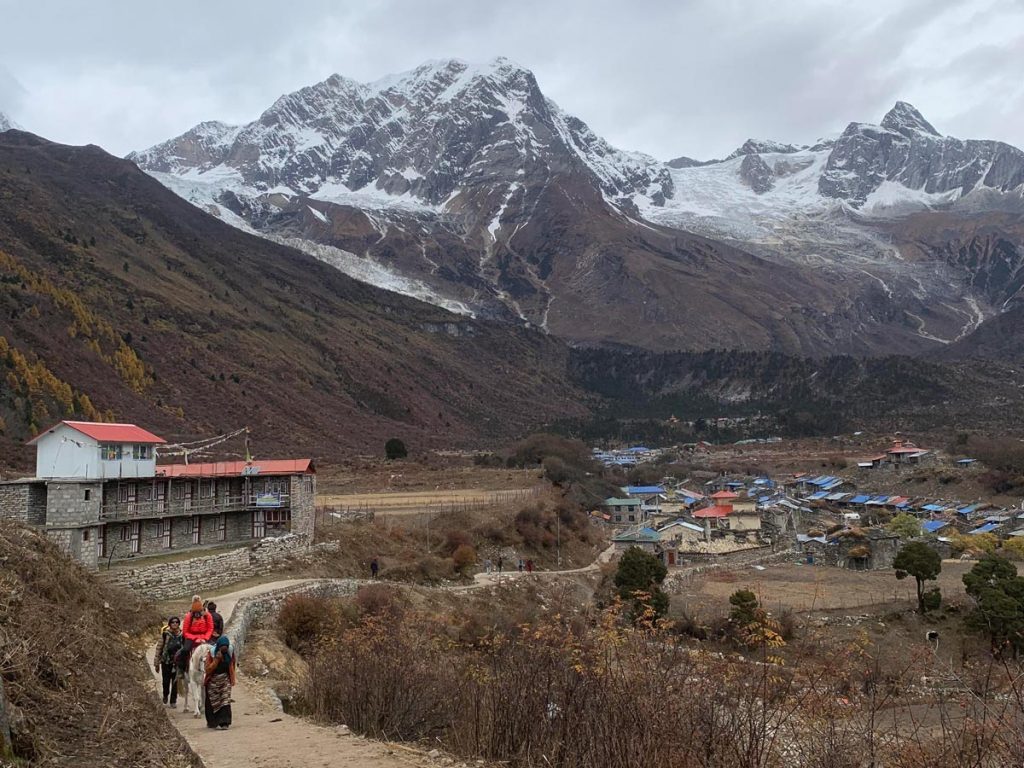
The climate is moderate, and visitors don’t have to deal with freezing temperatures unlike the winter season (December to February). The clear blues of the sky also provide unobstructed vista of the Himalayas.
Wildlife is extremely active in this biodiversity hotspot during these seasons with random spotting of several fauna and the flora dotting the landscapes with beautiful hues of colors against the stunning backdrop of snow-clad Himalayas.
However, for those wanting a quieter experience, winter can be a good season as it also features clear skies and an experience blanketed in snow. The challenge of extreme temperatures is highly prevalent though.
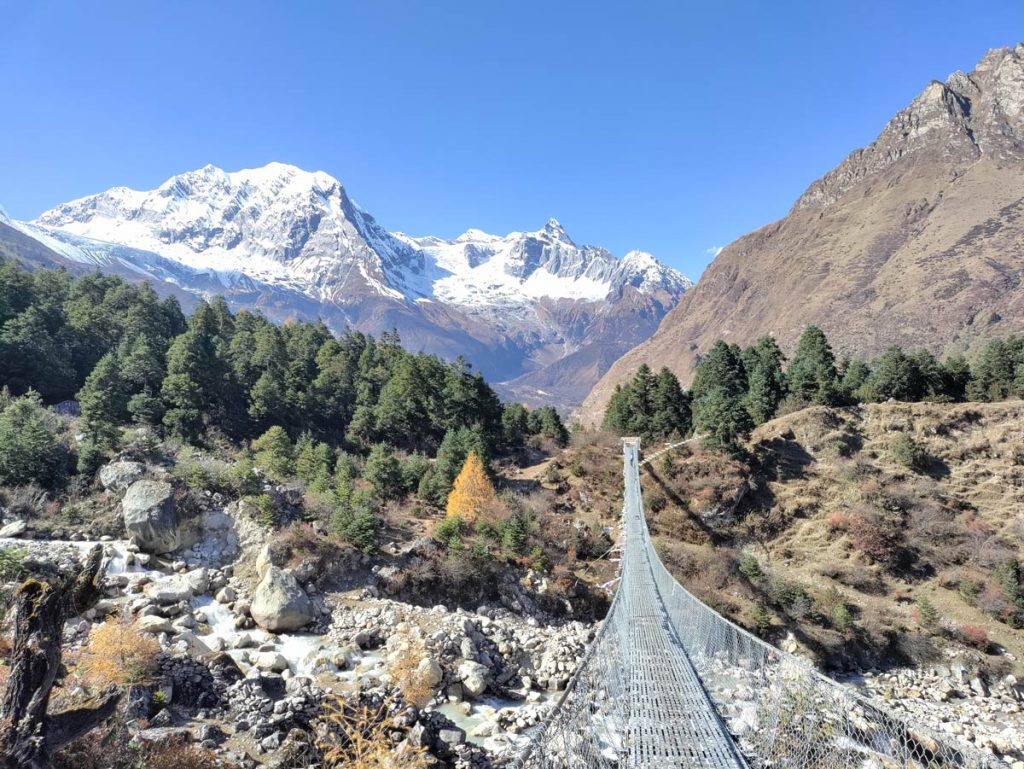
Although the monsoon (June to August) also allows you to roam around the region in solitude, visiting the region during monsoon might be a bad idea due to constant and sudden downpours leading to slippery trails and high risk of landslide in the Manaslu Conservation Area.
Trekking here during monsoon is strictly not advisable as it becomes a high-risk adventure with treacherous trails and chances are you will find many teahouses in the region closed too due to less trekker’s traffic.
Trekkers also need to keep several other things in mind. Therefore, it is advisable that you do your proper research about the best time for Manaslu Circuit trek before embarking on it.
Additional Tips
- Be prepared for unexpected weather changes as the weather in the region becomes less and less predictable. Carry gears to tackle rain as well as extreme temperatures.
- If you are a trekker, hire a trekking guide or get in touch with a local tour agency as solo trekking has been prohibited in Nepal. It is also important for your safety as the treks in this region aren’t as popular and will see less trekker traffic.
- For trekkers, invest in a good pair of trekking boots as the trails can be really demanding around the landscapes of the Manaslu Conservation Area.
- Embrace the joy of responsible tourism ensuring that your visit doesn’t have negative effects on the fragile ecosystem of the region.
- Respect the local culture and try to indulge with the local communities to get a more authentic experience. Get a taste of the local cuisine while you’re at it.
- If you are going towards a higher altitude, do not miss out on acclimatization days to prevent altitude sickness. Learn basic first aid as it might come in handy at any given time.
- Embrace the unexpected and enjoy your true Himalayan adventure along the remote corners of the Manaslu Conservation Area as you disconnect from the world outside.
Conclusion
A tad bit different from all your other Himalayan adventures, the Manaslu Conservation Area is an unparalleled experience allowing you to get a glimpse of the untamed wilderness of life in the Himalayas.
With challenges and charms in equal ratio, exploring the Manaslu Conservation Area allows the visitors to understand the delicate balance between nature and humans. Embark on your Manaslu adventure today!
